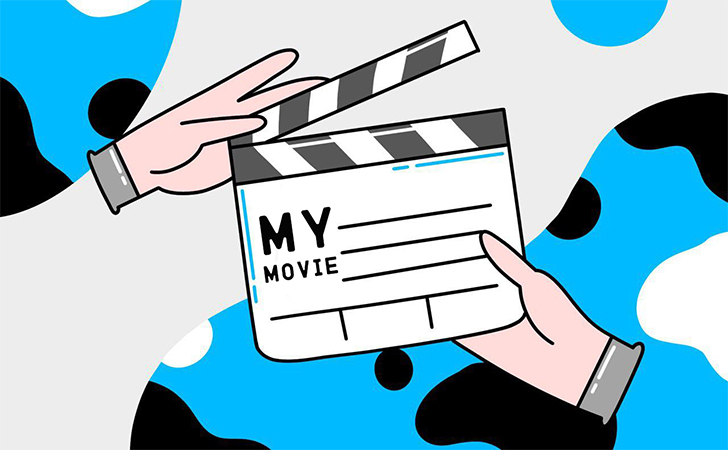We use cookies to improve the services we offer you. By continuing to browse this site, you consent to keep them in accordance with our Privacy Policy.
×We use cookies to improve the services we offer you. By continuing to browse this site, you consent to keep them in accordance with our Privacy Policy.
× 4,569
4,569
 7 min
7 min

So you’ve decided to create your own movie. Well, that is not an easy thing to do, but it will sure be an interesting project!
There are three stages to filming:
You should take every one of these stages seriously if you’re going to produce a movie worth watching.
Think of something you want to tell the world about, something that’s really important to you. Try to answer this question: why are you making this movie? What is it that’s significant, or funny, or exciting and that you want people to experience?
Once you’ve got your idea, start writing your script. Without a great screenplay, it is not really possible to make a good movie. For your first movie, you don’t need a complicated plot à la Christopher Nolan. Try to make your story as simple as possible while keeping it exciting. Pay special attention to the dialogue, as this can often be the most annoying part of an indie movie.
Decide on the major and minor characters and imagine their motivation for doing things. Nothing should happen without a reason – in a movie, every word and every move is a reaction to something.

While writing the dialogue, think about every single scene – write down where the characters stand, what else is in the frame, what the weather is like, and what sounds should accompany the scene.
Keep it short – it’ll be easier for your first outing. If you need some inspiration (but not plagiarization!), you can find tons of free scripts for famous movies here. You can write your script with the help of specialized software – StudioBinder and Celtx are free. They’ll not only help with formatting but also managing the whole production process
Even a very simple indie movie will cost you something. Nevertheless, there are ways to avoid major expenses. For example, you can cast drama students and acting club members. Ask drama teachers if they have any students who are willing to volunteer, or post an announcement on targeted Facebook pages.
You can use the same approach to hire a camera operator, a sound engineer, or a lighting director. But if you have the opportunity, it is better to hire professionals for these positions, as bad lighting and sound can really screw up the whole movie, no matter how perfect the plot and performers.

Even if the whole team is working for free, you’ll still have to pay for the transfer from one set to another, for the lunches, the parking, the costumes, the makeup…
Plan your shooting day by day. Is there going to be a wedding? If so, you’ll need to buy a dress and a suit, flowers, and other decorations. Is there going to be a romantic declaration of love in a snowfall? You’ll probably need to rent a snow machine.
Take into account every possible expense and, if you see that you don’t have enough money, try to find investors or go crowdfunding. If you’re skeptical about doing this, here are some trailers of crowdfunded movies:
Equipment can be a considerable expense. You will need a decent camera, microphones, tripods, stabilizers, reflectors… The post-production stage will require a computer and editing software. However, there are examples now of good movies shot on a smartphone: “Paranmanjang” by Park Chan-wook (it even won an award at the Berlinale in 2011) or “Unsane” by Steven Soderbergh (2018). So even so fundamental an item as a camera can be replaced by a cheaper alternative. Experiment!

Try to find locations close to each other so you won’t spend time and money getting from one place to another. For your first try in filmmaking, it is better to choose places where you can shoot for free. For example, if a scene takes place in an apartment, shoot it at your or your friend’s home. If you’re going to shoot in the street or in a park, keep in mind that there will be lots of extraneous noise and consult with your sound engineer about that. Also, remember that before shooting in a cafe, or a shopping mall, or any other public space, you’ll need to get approval from the management of the facility.

Explore the internet and find movie creators you trust and can get inspiration from. Here are a few examples to get you started:
The better you’ve done your planning, the easier the shooting process will be. When you have a well-written script, found the right actors, and checked all the equipment, the only thing you need to do is to follow the plan and shoot according to the scenario.
One important thing to accept is that it’s a rare take that will be good on the very first try. Even if the pre-production stage was ideal, nothing is going to be perfect, and that’s OK. Just keep redoing every take until you’re satisfied with it.
The production stage also includes gathering the music, still images, archive material, and other content you may need. Don’t forget that everything needs to be copyright-free or bought from the owner if you want to make your movie public.
The next step is to connect all the components of your movie together. If you’re willing to do it yourself but you’re new to editing, find an easy program like Movavi Video Editor Plus – an intuitive program that’s accessible even for beginners.
Import your footage and audio on the timeline, place the clips in order. Don’t worry if some shots appear to have no place; if you find at the editing stage that they are not making the movie better, you can set them aside.
Synchronize the audio with every clip. Make sure the transitions between takes are smooth and add some visual and sound effects. You can also use filters to bring a particular atmosphere to your film.
Before you proclaim your movie ready, show the draft to a small group of people, and get feedback. Ask questions like:
Once you’re satisfied with all the answers, your movie is ready!
Stay creative and stay in touch!
Yours as always,
Movavi Team.